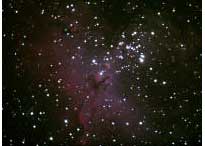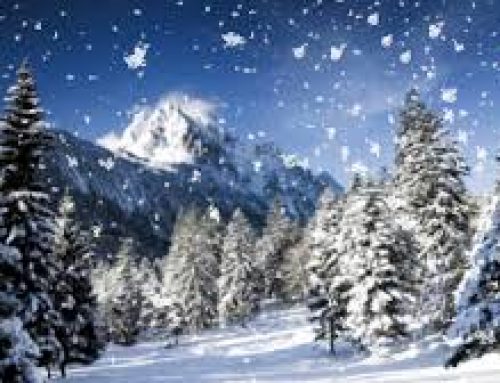
The Eagle Nebula
A nebula is a bunch of atoms and molecules floating in outer space, like a cloud of dust. More than one nebula are called nebulae, because -ae is the plural ending in Latin, just as -s is the plural ending in English. Nebula is the Latin word for a cloud.
The earliest nebulae formed just after the Big Bang, about 15 billion years ago. They were made of hydrogen and helium atoms. The earliest stars formed in places where the dust got so thick that gravity pulled the atoms close enough together for nuclear fusion to start, so there were nebulae before there were stars.
After that, more nebulae formed when the first stars exploded into supernovas. The supernovas shot out many different kinds of atoms that had formed inside the stars, making new nebulae out of not just hydrogen and helium, but also carbon, oxygen, nitrogen, silica, iron, and a little bit of heavier elements like gold and uranium.
Inside these nebulae, the atoms often joined up into simple molecules like water and sugar and other hydrocarbons. Later, more complicated molecules like amino acids formed. Eventually, inside some nebulae, the dust thickened in some places enough to form new stars, or to form planets around those stars.
New nebulae are still forming today, whenever a star explodes into a supernova. One example is the Crab Nebula, which formed in 1054 AD. We know because scientists in China and the Abbasid Empire wrote down their observations of the supernova. If you are out in the country, in a dark place, you can see nebulae with your own eyes, without even using a telescope.
More different types of stars
Bibliography and further reading about stars:




